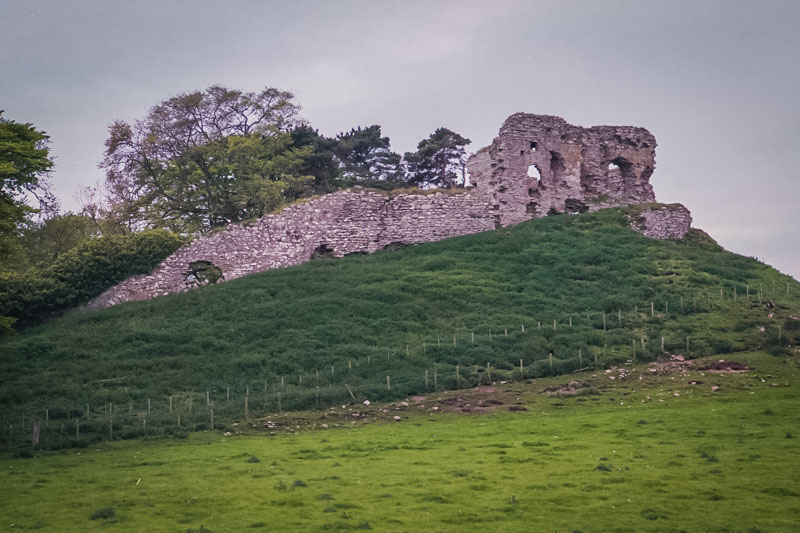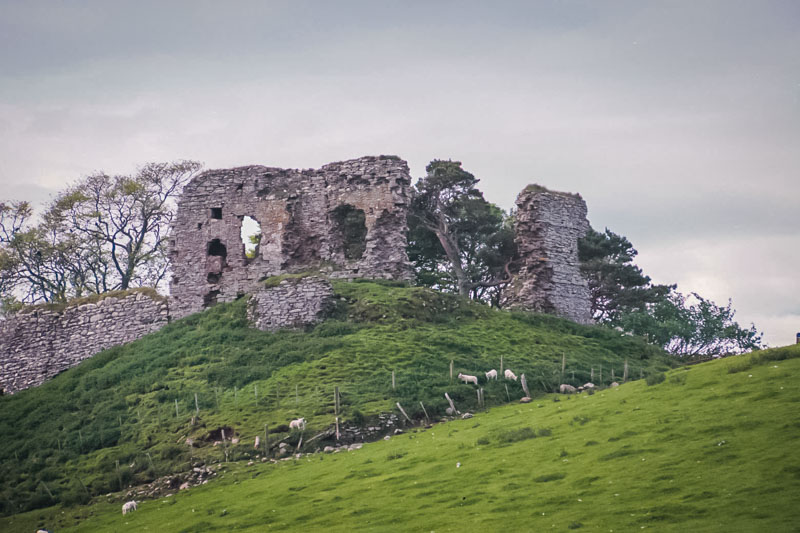
Skelbo is a dangerous ruin (we didn’t get much closer than this look). It was once a rectangular great tower in the 14c, exclosed inside a low barmkin wakk. Some of the barmkin has been rebuilt in the later style, and can be seen on the left. The tower remains, but was obviously repaired. There are remains of other buildings in the barmkin wall. Old Skelbo House is a long two story house with baulted basements and dates from about 1600. The first floor was reached by a ladder.
Skelbo is build on the site of a former ferry across the mouth of Loch Fleet. The remaining wall may be 14c and is best preserved at the north end of the site. There are indications of a round tower at the east corner, possibly a relic of an early 16c gatehouse, much like that at Urquhart Castle, although most of the walls have fallen.
Hugh Feskin gave Skelbo to Gilbert de Moravia in 1211, who was later Bishop of Caithness. Skelbo was also the site of some iffy political meetings, as when the English and Scottish commissioners met at Skelbo in 1290 to greet the Maid of Norway as the Queen of Scots and were told of her death at Kirkwall.
A castle here belonging to the Sutherlands was captured by Robert the Bruce in 1308. Thomas Kinnaird acquired Skelbo in 1440 by marrying Egidia (yes! what a name!), heiress of Walter Moray. The castle was captured in 1494, and two of John of Moray’s children were abducted. It was sold to William Sutherland of Duffus in 1529. Martin Coventry notes that Skelbo is a smaller version of Duffus Castle.
William Sutherland, Lord Duffus, was killed in Thurso in 1530 and his son sacked and burned the cathedral in Dornoch in 1567, and again in 1570. Skelbo was again besieged in 1621. The family was forfeited for their part in the Jacobite Rising on 1715. The castle was occupied by Jacobites in 1746. It was still occupied in 1769, but probably decayed after 1787 when it was given to the Countess of Sutherland. It has since fallen into its present state, although the roof was buttressed with scaffolding recently, and it appears that some attempt was made to stabilize the ruin.
There is no easy access to the ruin, and these pictures were taken from the road only on our way out of Dornoch.

